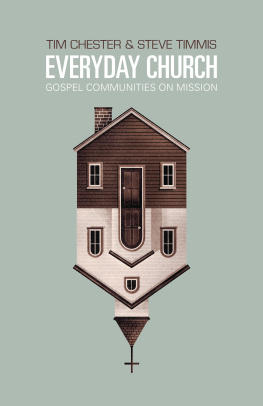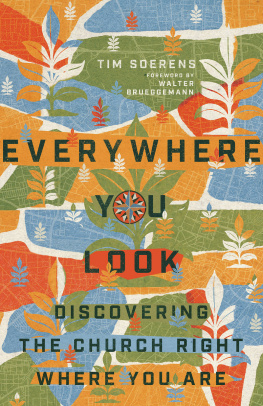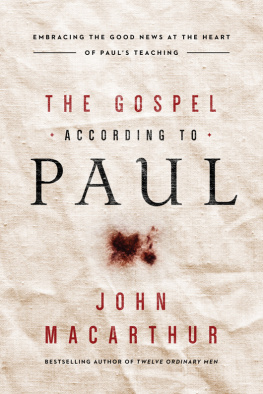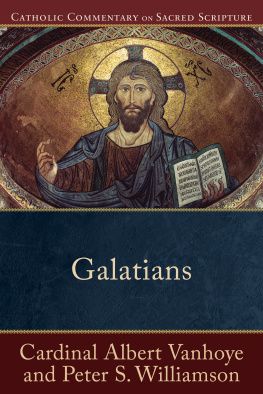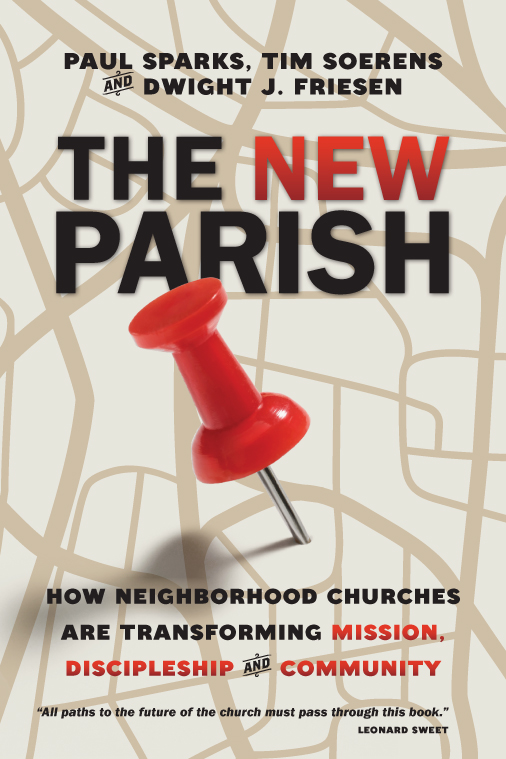InterVarsity Press
P.O. Box 1400,
Downers Grove, IL 60515-1426
World Wide Web: www.ivpress.com
Email:
2014 by Paul Sparks, Tim Soerens and Dwight J. Friesen
All rights reserved. No part of this book may be reproduced in any form without written permission from InterVarsity Press.
InterVarsity Press is the book-publishing division of InterVarsity Christian Fellowship/USA, a movement of students and faculty active on campus at hundreds of universities, colleges and schools of nursing in the United States of America, and a member movement of the International Fellowship of Evangelical Students. For information about local and regional activities, write Public Relations Dept., InterVarsity Christian Fellowship/USA, 6400 Schroeder Rd., P.O. Box 7895, Madison, WI 53707-7895, or visit the IVCF website at www.intervarsity.org .
All Scripture quotations, unless otherwise indicated, are taken from THE HOLY BIBLE, NEW INTERNATIONAL VERSION, NIV Copyright 1973, 1978, 1984, 2011 by Biblica, Inc. Used by permission. All rights reserved worldwide.
While all stories in this book are true, some names and identifying information in this book have been changed to protect the privacy of the individuals involved.
Cover design: David Fassett
Images:
red push pin: Joe Cicak/Getty Images
city map illustration: MichelIsola/iStockphoto
ISBN 978-0-8308-9596-0 (digital)
ISBN 978-0-8308-4115-8 (print)
Contents
Introduction
Three Lives Transformed by
Rooting and Linking Together
When we honestly ask ourselves which persons in our lives
means the most to us, we often find that it is those who,
instead of giving advice, solutions, or cures, have
chosen rather to share our pain and touch our
wounds with a warm and tender hand.
Henri Nouwen, Out of Solitude
All stories have a deeper story lying just beneath the surface, and so it is with this book. This tale begins with desperation. Each of us was coming from uniquely different neighborhoods and backgrounds, but all of us were longing for colleagues who might offer friendship and encouragement. Our collective story doesnt begin with a grand vision or contagious momentum. It begins with deep hope for the church in the twenty-first century and an honest need for one another. Both of these realities remain true. Here is how, in confusion and anticipation, our stories became knit together.
From Consumer Church to the Parish
Paul Sparks had been pastoring a rapidly growing church. It was a GenX church born out of the early nineties Seattle grunge era. Beginning as a college-age ministry, it featured alternative worship bands and more pop culture references than you could shake a stick at. Throughout the years there were truly incredible seasons of awakening and renewal, but Paul was feeling a deep angst. There seemed to be a progressive infatuation with stagecraft and putting on a performance at the gathering. Meanwhile, there was a shrinking connection with what it meant to be the church together in the everyday realities of life.
At one point Paul took a six-month sabbatical of sorts and set out on a pilgrimage. Leaving his home, he walked sixteen hundred miles across the Pacific Northwest. He would walk for four days and then stop in a particular place to explore church ministries and neighborhoods the other three days of the week. Paul was on a quest to discover where his faith community might have gone wrong, and how the Spirit might be moving in other places. Everywhere he walked Paul discovered that when followers of Jesus were sharing life together and living in the midst of the everyday realities of a particular place, there was a vibrancy and growing maturity to their faith. Though it would be many months after Paul returned before the full implications of his experience became apparent, eventually things began to shift.
Around the turn of the century the church leadership team began moving toward deeper relational engagement and more profound connection to the cultural life of the area. Out of a deep desire to share life together and to be a living expression of the church beyond the Sunday gathering, the leadership team began calling for a move to become more deeply rooted in the heart of downtown Tacoma, Washington.
Over the months of preparation, the congregation seemed to give support to the new vision. But once the actual shifts toward parish life began to happen, the crowds that had been attending from all over the region began to shrink from hundreds to handfuls. You can imagine Pauls leadership crisisthe second guessing and the sinking feeling that he may have just made a massive mistake.
From Abstract Conversation to Real Shared Life
Meanwhile, a few miles to the north, Dwight Friesen had recently transitioned from pastoring a network of emergent simple churches to training seminary students at The Seattle School of Theology and Psychology. As a pastor, Dwight was trying to help the congregation invest relationally together and truly know one another. But there was a persistent problem. While being known by one another was truly transformative, the geographic distance between members limited sharing life to very intentional meet-ups. Increasingly the requirement to develop relationships with each other also meant leaving the multiple contexts they felt called to serve. After eleven years, Dwight was relationally fatigued, and though the work of the academy was rigorous, he found it a welcome respite.
Dwight poured himself into his work as a professor and found his intuitive sense for seeing relational and theological connections heightened by mentors such as Dan Allender, Caprice Hollins and Stanley Grenz. His growing scholarly focus was on forming people as followers of Christ who thought and lived out of a deep triune ecclesiology.
But the more exciting Dwights research on the relational foundations of the church became, the more he felt the irony of his growing withdrawal from meaningful shared life. He loved the church and couldnt shake the longing to recover more holistic practices that might meaningfully weave the core facets of church life into a more unified whole. Thus, he kept searching for real-world examples of followers of Christ who were integrating deep community life with formative practice and meaningful engagement with their context.
From Projects to Neighborhood Renewal
During this same time, Tim Soerens, who had pioneered a number of missional experiments, was beginning a neighborhood-based church expression in South Lake Union, in the north part of downtown Seattle. As the months went by, Tim found himself in a bind. On the one hand, he was invigorated by the abundant potential for the churchs engagement within the complex dynamics of a rapidly changing urban neighborhood. On the other hand was the massive challenge of helping a church move from coming into the neighborhood with various projects and services, to developing a rich practice of relational life as neighbors living together.
Tims longing was for relational engagement in the neighborhood and a missional focus organized around holistic neighborhood renewal. Soon he found himself participating in just about every facet of the communitys life and growth. He was asked to sit on multiple civic boards stewarding the future of the neighborhood, and helped to build teams for a new farmers market, advocacy group and community center. Meanwhile, he was inventing experiences that might draw the church into more participatory and engaging ways of living out their faith in the neighborhood together.



